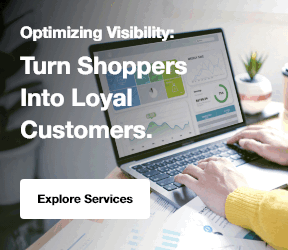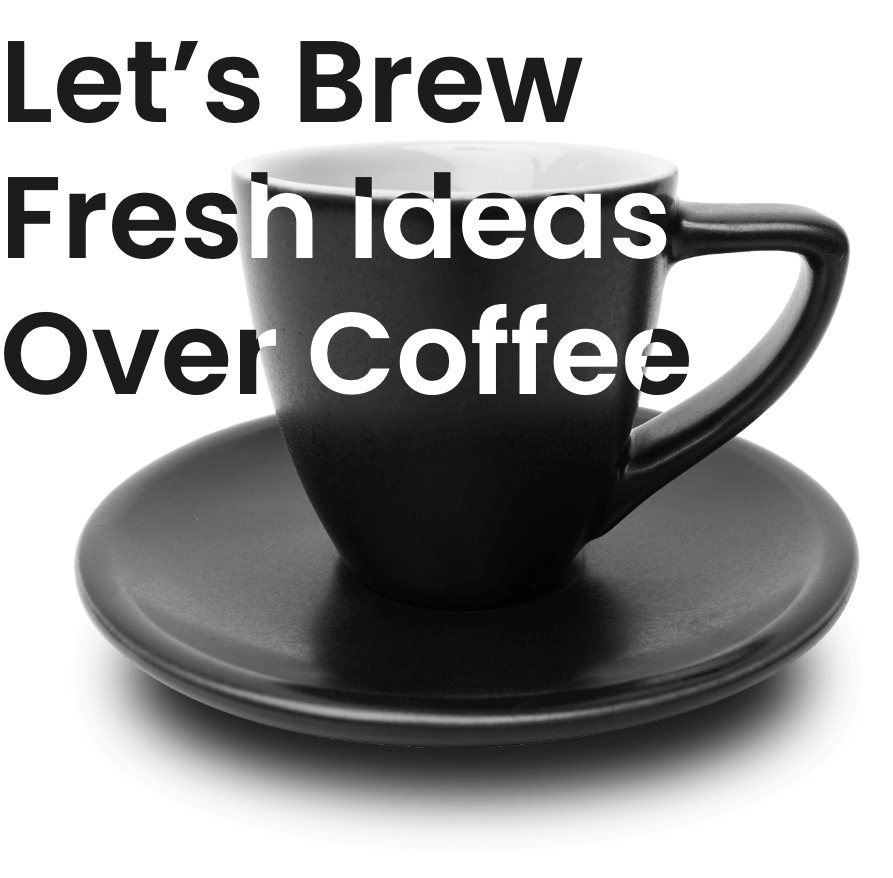What is Ad copy? It is the written content crafted to persuade, inform, and inspire action, often the action you want your audience to take, such as clicking an ad, making a purchase, downloading an app, or subscribing to a newsletter. Unlike blog articles or white papers, which can go in-depth and explore topics at length, ad copy thrives on conciseness and impact. It has seconds, sometimes less, to catch attention, make a case, and motivate action.
Think of the last time you stopped scrolling on social media because an ad caught your eye. Maybe it was a bold headline, a clever hook, or an irresistible promise. That’s ad copy at work. In an age where consumers are bombarded with marketing messages daily, effective ad copy stands out because it speaks directly to an audience’s needs, emotions, and aspirations.
From Google search ads to TikTok captions, email subject lines to billboard taglines, effective ad copy helps businesses differentiate themselves in crowded markets and create memorable first impressions that lead to measurable results.
What is Ad Copy?
Ad copy is a specialized form of content designed to prompt an immediate action from potential customers, driving them toward a specific call to action (CTA).
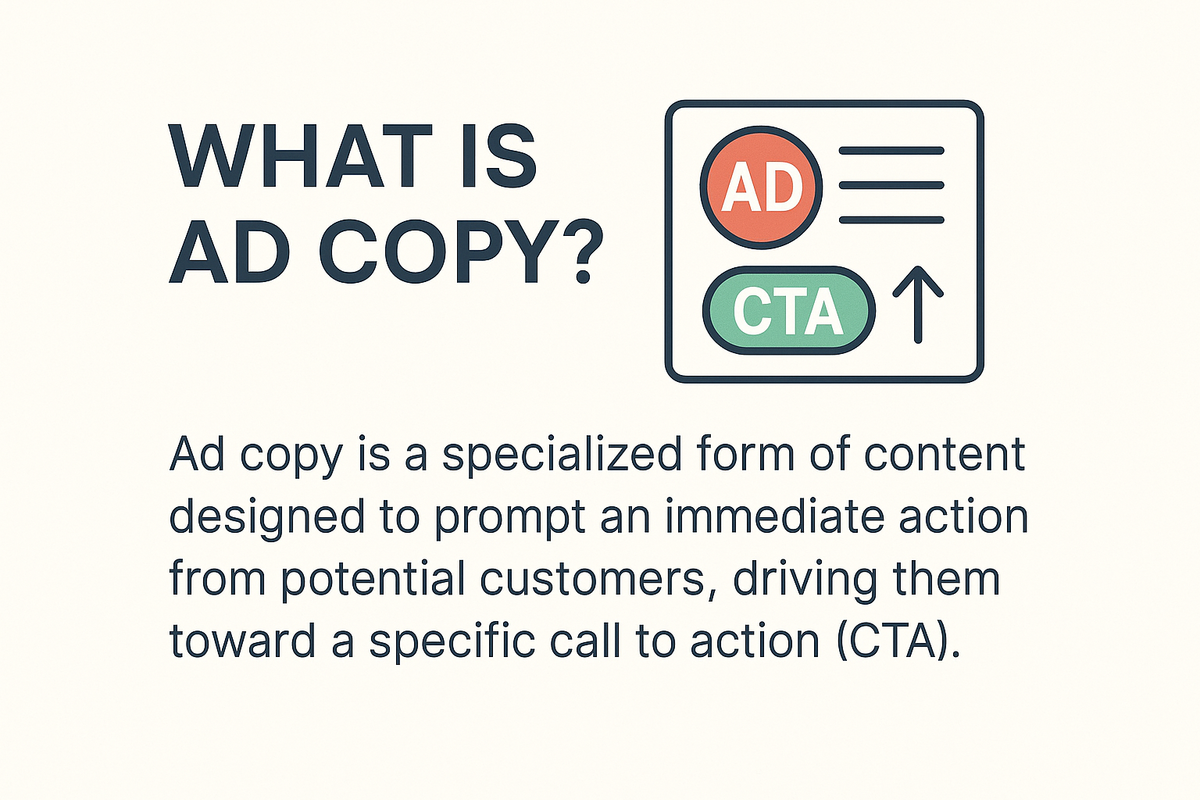
Think of it as the digital equivalent of a salesperson guiding a customer through a purchase process. While traditional sales interactions allow for direct communication where salespeople can answer questions and offer personalized assistance, online sales lack this personal touch. This is where effective ad copy steps in, providing the information that prospects need and persuading them to take the next step in their buying journey.
In essence, ad copy acts like a sales lette, it presents the features and benefits of a product or service while addressing potential customer objections. Its primary purpose is to increase conversions and drive targeted traffic to the right destination, much like a salesperson convincing a lead to make a purchase.
Why is Ad Copy Important?
Ad copy plays a crucial role in driving business profitability. Its main goal is to convert visitors into leads, and leads into paying customers. Well-crafted ad copy highlights the unique value of your product or service, making it irresistible to potential customers. It does so by being relatable, persuasive, and highly targeted. If you want to ensure your ad copy reaches its full potential, consider researching Are Google Ads Worth It, as Google Ads can be a powerful tool when done right.
Here are the key reasons why ad copy is indispensable in any marketing or sales strategy:
1. Increases Engagement with Effective Calls to Action (CTAs)
One of the primary purposes of ad copy is to prompt visitors to take action. Effective ad copy grabs attention with powerful headlines that appeal to emotions such as desire, curiosity, and fear of missing out (FOMO). This leads visitors to engage with the content and eventually take action, whether it’s signing up for a newsletter, downloading a coupon, or making a purchase. By placing the call to action at the right moment, you increase the likelihood of conversion, particularly at "hotspots" where visitors spend the most time on the page.
2. Appeals to Both Logical and Emotional Triggers
Good ad copy balances both logic and emotion. It answers potential questions, addresses concerns, and emphasizes benefits that align with the customer’s needs. At the same time, it plays on emotional triggers that drive decision-making, such as urgency, exclusivity, or fear of missing out. By presenting a compelling argument in favor of your product or service, ad copy convinces customers to take action without feeling overly "salesy," which is often more effective than hard-sell tactics.
3. Builds Trust and Emotional Connection with Your Brand
Effective ad copy doesn’t just sell a product, it tells a story. By conveying the story behind your brand, you create a deeper emotional connection with your audience. This helps potential customers relate to your business, understand your mission, and feel that your brand can meet their needs. Rather than simply funneling traffic to your site, ad copy helps ensure that the right people are visiting, and more importantly, that they understand the value you offer.
4. Boosts Conversion Rates and Profits
When done correctly, ad copy can significantly boost your conversion rates, turning casual visitors into loyal customers. It overcomes hesitation by presenting a clear, concise, and compelling reason to act. Moreover, because it’s carefully crafted to address potential objections and pain points, ad copy doesn’t just drive traffic—it drives conversions, increasing sales and ultimately boosting profits without coming across as overly aggressive.
What Makes Good Ad Copy Effective?
Great ad copy is a blend of psychology, strategy, and creativity. It’s not just about sounding catchy; it’s about understanding human motivation and matching it with your brand promise.
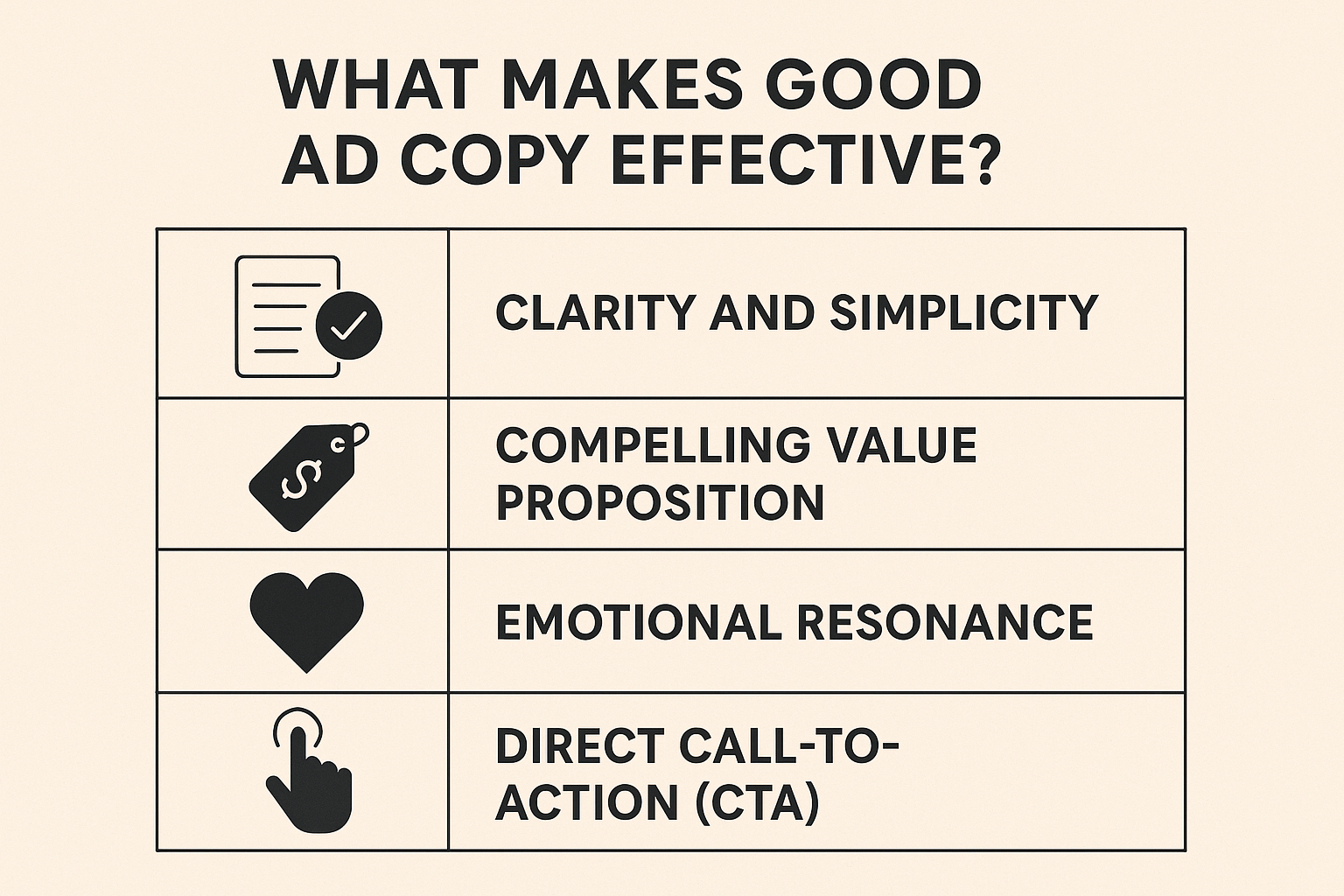
Four qualities define highly effective ad copy:
- Clarity and Simplicity – The audience should understand your offer in seconds. Clear copy avoids jargon, overcomplicated words, or unnecessary fluff.
- Compelling Value Proposition – It’s not enough to say what your product does; the copy must highlight what makes it better or different from competitors.
- Emotional Resonance – People rarely buy on logic alone. Great ad copy taps into emotions such as excitement, relief, or aspiration.
- Direct Call-to-Action (CTA) – Copy should leave no doubt about what to do next, whether it’s “Shop Now,” “Subscribe Today,” or “Request a Demo.”
If you’re struggling to create high-performing copy, professional Creative Services can help refine messaging, build brand voice, and design ads that convert while staying true to your identity.
5 Main Types of Ad Copy
Not all ads are created equal, and neither is the copy behind them. Different campaign goals call for different styles of writing:
1. Direct Response Copy
Direct response copy is urgent, persuasive, and crafted to drive an immediate action from the audience, whether that’s clicking a button, making a purchase, or signing up for a service. It often uses time-sensitive offers, clear benefits, and strong calls-to-action like “Get 30% off today only!” This type of copy is highly measurable and ideal for campaigns where quick conversions matter most.
2. Brand Awareness Copy
Brand awareness copy focuses on telling a compelling story and showcasing the personality of the brand rather than aggressively selling a product. It helps audiences connect emotionally by communicating the company’s mission, values, and identity in a relatable way. This style builds long-term recognition and loyalty, making it powerful for emerging brands and rebranding campaigns.
3. SEO Ad Copy
SEO ad copy is written with high-intent keywords to ensure ads appear prominently in search engine results when potential customers look for solutions. It balances keyword integration with engaging, user-friendly language that attracts clicks without sounding robotic. For businesses aiming to target the best advertising platforms, using Best Advertising Platforms for your SEO campaign could significantly boost visibility and drive more targeted traffic to your website. This type of copy is crucial for paid search campaigns and increasing organic visibility.
4. Social Media Copy
Social media copy is conversational, trendy, and crafted to fit the personality of platforms like Instagram, TikTok, and Facebook. It often uses humor, pop culture references, or relatable scenarios to engage audiences and encourage likes, shares, and comments. Short yet impactful, this style is designed to spark engagement and strengthen brand-community relationships.
5. Email Ad Copy
Email ad copy is personalized and segmented to nurture leads, retain customers, and drive conversions through inbox communication. It often features attention-grabbing subject lines, tailored messages, and clear calls-to-action to make readers feel understood and valued. When done well, it builds long-term customer relationships and consistently drives repeat business.
For businesses in specialized industries such as energy, logistics, or exploration, working with an oil and gas marketing agency ensures ad copy reflects complex operations in a way that’s approachable yet professional.
4 Benefits of Strong Ad Copy
High-quality ad copy can make or break your marketing ROI. Here’s why it matters:
- Higher Click-Through Rates (CTR) – Headlines and CTAs that grab attention compel users to click rather than scroll past.
- Increased Conversion Rates – Persuasive messages turn browsers into buyers, subscribers, or leads.
- Consistent Brand Voice – Well-written copy builds credibility and creates familiarity with your audience.
- Better Return on Ad Spend (ROAS) – When every impression costs money, optimized copy ensures you’re maximizing each click.
In industries where taste, emotion, and storytelling matter, such as food and beverage, partnering with a food and beverage branding agency helps craft copy that tantalizes taste buds and creates memorable brand experiences.
What Challenges Does Ad Copy Creation Bring?
While it may look simple, writing impactful ad copy is one of the hardest skills in marketing. Common challenges include:
- Understanding the Audience Deeply – Without well-researched buyer personas, copy risks sounding generic.
- Standing Out in a Saturated Market – With thousands of competing messages, fresh creative angles are vital.
- Balancing Creativity and Clarity – Clever wordplay is great, but not at the cost of clarity.
- Testing and Iteration – Copywriting isn’t “set it and forget it”; A/B testing and tweaking are key to success.
Brands in highly competitive, experience-driven sectors, like travel and hospitality, can work with a travel marketing agency to create copy that sparks wanderlust while strategically increasing bookings.
What Are the Best 5 Practices for Writing Ad Copy?
To create ad copy that truly converts, following these five key practices will help you write persuasive, engaging, and action-driven messages.
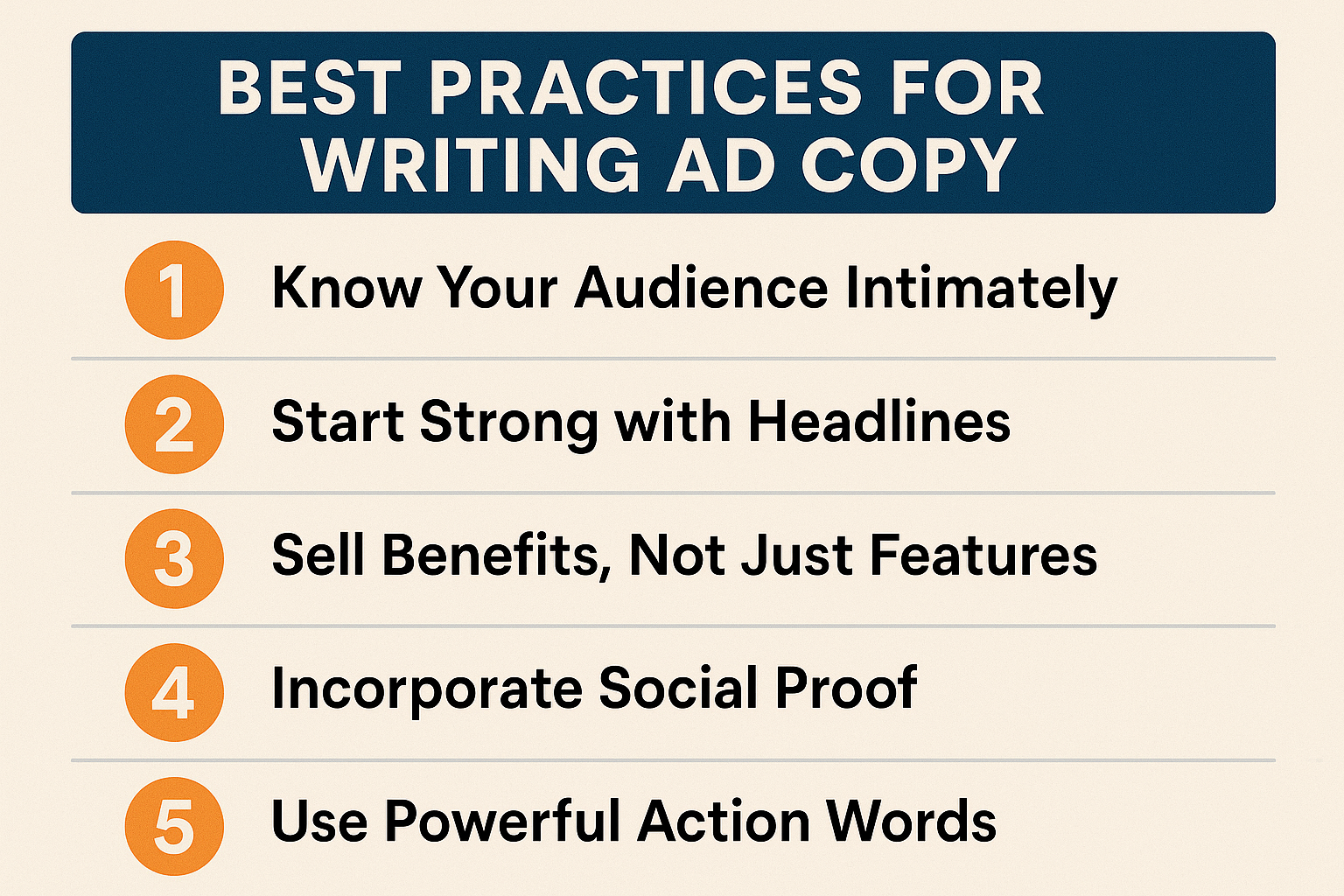
Successful ad copywriting follows proven principles:
- Know Your Audience Intimately – Conduct market research, interviews, and surveys to understand their pain points and dreams.
- Start Strong with Headlines – Many people only read the headline. Make it benefit-driven or curiosity-inducing. For example, using Effective Google Ads Campaigns Examples can inspire your copywriting efforts and guide your strategies for a more targeted approach.
- Sell Benefits, Not Just Features – Features tell what a product is; benefits show how it improves lives.
- Incorporate Social Proof – Testimonials, reviews, and statistics add credibility.
- Use Powerful Action Words – Words like “discover,” “unlock,” and “transform” energize your message.
For industries where storytelling and entertainment value matter, collaborating with an entertainment marketing agency ensures that ad copy captures attention while prompting clear action.
What Role Does Emotion Play in Ad Copy?
Emotion is the invisible force that drives purchasing decisions. People may justify choices logically, but they decide emotionally. Great ad copy often taps into:
- Excitement & Joy – Launches, new products, and aspirational brands.
- Fear of Missing Out (FOMO) – Limited-time offers or exclusive drops.
- Nostalgia – Especially effective for heritage brands.
- Hope & Transformation – Ideal for self-improvement or life-enhancing services.
Luxury brands, in particular, thrive on aspirational and prestige-driven messaging. A luxury branding agency helps refine language that makes audiences feel part of an elite, exclusive experience.
What Are the Differences Between Ad Copy for Digital and Traditional Media?
While both aim to persuade, digital and traditional ad copy differ in style and strategy:
- Digital Ad Copy – Must be concise, keyword-focused, and optimized for conversions. Think search ads, social media posts, and mobile-friendly messages. If you're looking for inspiration on how to effectively implement these strategies, check out the Best Advertisement Examples to see how some of the most successful campaigns capture attention and drive action.
- Traditional Ad Copy – Often longer and story-driven, used for print, TV, and radio. It focuses more on building brand identity and emotional resonance.
Digital platforms allow real-time data tracking, enabling businesses to adjust their copy based on performance. Automotive brands adapting to this evolving landscape can gain valuable insights by partnering with an automotive marketing agency skilled in merging offline legacy marketing with digital precision.
4 Tools That Help Create Better Ad Copy
Modern marketers have a wealth of tools to support the copywriting process:
- Keyword Research Tools (e.g., SEMrush, Ahrefs) – Discover what your audience is searching for.
- Headline Analyzers (e.g., CoSchedule) – Score headlines for emotional and structural strength.
- A/B Testing Platforms – Test different ad variations for the highest conversions.
- AI Writing Assistants – Spark ideas or help brainstorm headlines and variations.
In real estate, where competition is fierce and digital listings are crowded, leveraging an experienced real estate marketing agency ensures that technology and data tools are seamlessly integrated into the ad copy process for stronger campaign results.
What Is the Future of Ad Copywriting?
The landscape of advertising is evolving rapidly. The future will be defined by:
- Hyper-Personalization – Using data to tailor messages to specific segments or even individuals.
- AI-Driven Insights – AI tools will help predict what headlines or CTAs perform best for different audiences.
- Conversational & Authentic Voice – Consumers crave brands that feel human and relatable.
- Purpose-Driven Messaging – Especially important for younger, socially conscious consumers.
Nonprofits, in particular, must balance data-driven insights with heartfelt storytelling. Partnering with a nonprofit marketing agency helps create copy that moves supporters to act while staying mission-focused.
What 5 Metrics Should You Track to Measure Ad Copy Success?
Measuring performance helps refine future ad campaigns and improve ROI.
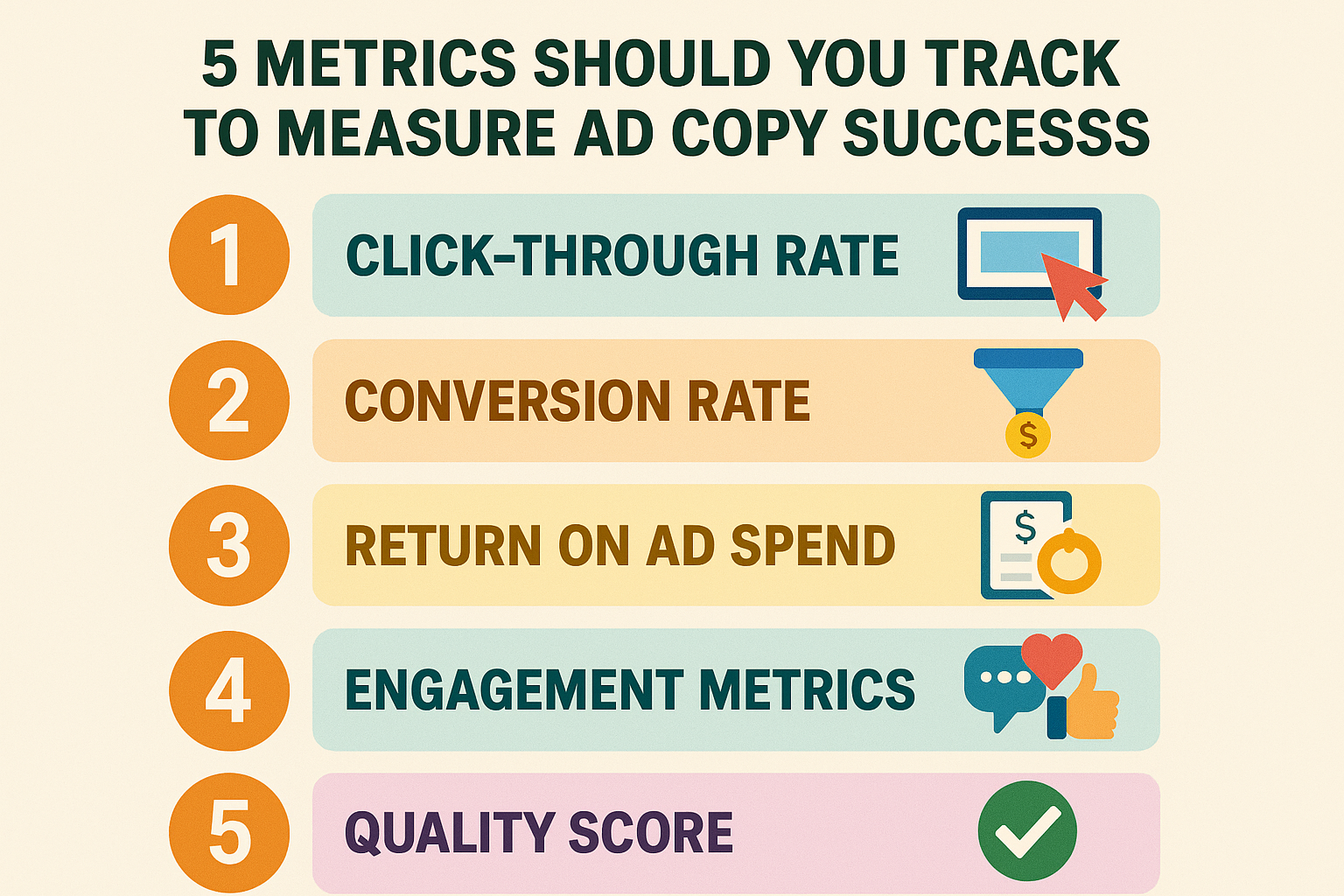
Key metrics include:
- Click-Through Rate (CTR) – Shows how compelling your ad is at attracting clicks.
- Conversion Rate – Tracks how many people take the desired action after clicking.
- Return on Ad Spend (ROAS) – Determines profitability.
- Engagement Metrics – Likes, shares, and comments reflect resonance with the audience.
- Quality Score (for Paid Ads) – Platforms like Google reward relevant, high-performing copy.
Tech-driven companies can collaborate with a tech marketing agency to make sense of these analytics and continually refine copy for better campaign performance.
4 Common Mistakes to Avoid in Ad Copywriting
Even experienced marketers can fall into these traps:
- Too Much Information – Audiences don’t want essays in ads. Keep it punchy and clear.
- Weak or Missing CTAs – Without direction, even interested users won’t know what to do next.
- Ignoring Mobile Audiences – Most ads are consumed on phones; test copy for smaller screens.
- No Testing or Optimization – Guessing what works wastes money. Use A/B testing and data.
Brands in regulated, trust-driven industries, like banking, can avoid these pitfalls with help from a banking and financial marketing agency that understands compliance, credibility, and consumer trust.
FAQ: What Is Ad Copy?
What is the main goal of ad copy?
To persuade your target audience to take a specific action, such as purchasing, signing up, or learning more, by communicating clear benefits and value.
What makes ad copy different from content writing?
Ad copy is concise, persuasive, and action-oriented, while content writing often educates, informs, or entertains with longer formats.
How long should ad copy be?
It depends on the platform, but most ad copy is brief, often a headline, short supporting text, and a call-to-action.
Can SEO help with ad copy?
Yes. Integrating relevant keywords improves visibility, particularly for search ads, while still keeping the message engaging.
Should I hire professionals for ad copywriting?
If your campaigns aren’t converting or your messaging feels unclear, hiring a professional agency can help you create powerful, ROI-driven ad copy.
Conclusion
Ad copy is more than just words; it’s a strategic business tool. It shapes first impressions, drives engagement, and directly impacts conversions and ROI. With shrinking attention spans and rising advertising costs, every sentence must work harder than ever.
So, what is Ad copy? It’s the key to transforming how your brand communicates with customers. For brands ready to transform their advertising, partnering with a trusted marketing partner like Centric ensures that your copy not only looks good but also delivers measurable growth. From research-driven insights to creative execution and performance tracking, Centric helps you stay competitive in today’s fast-moving digital economy.







